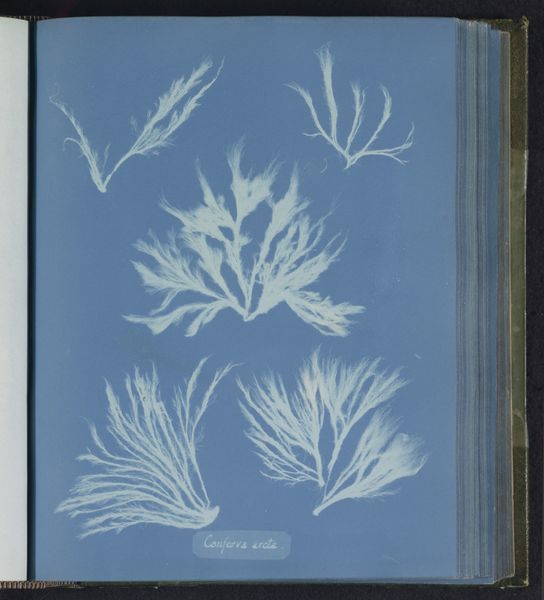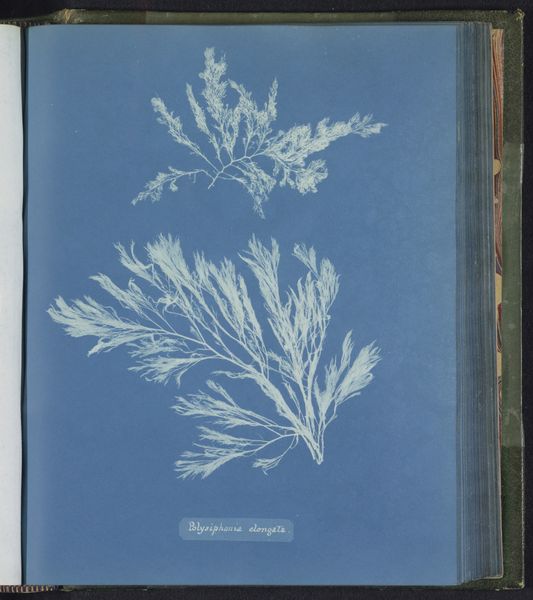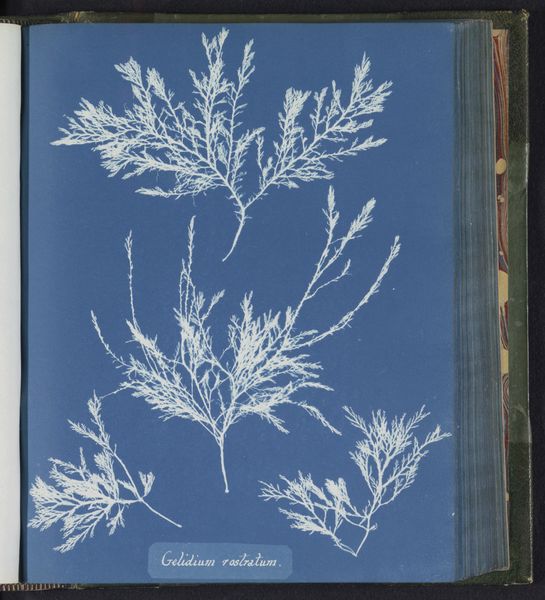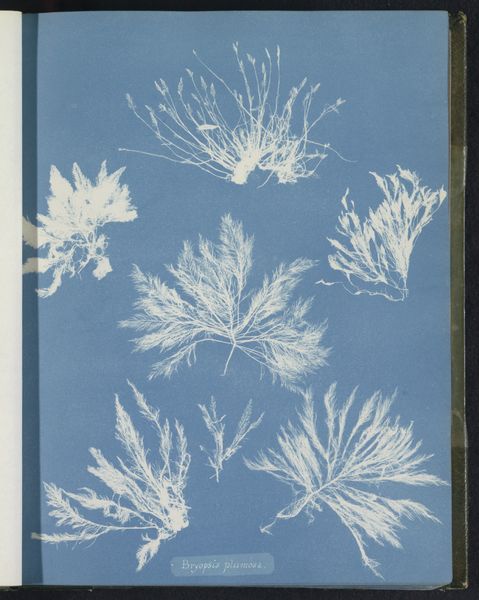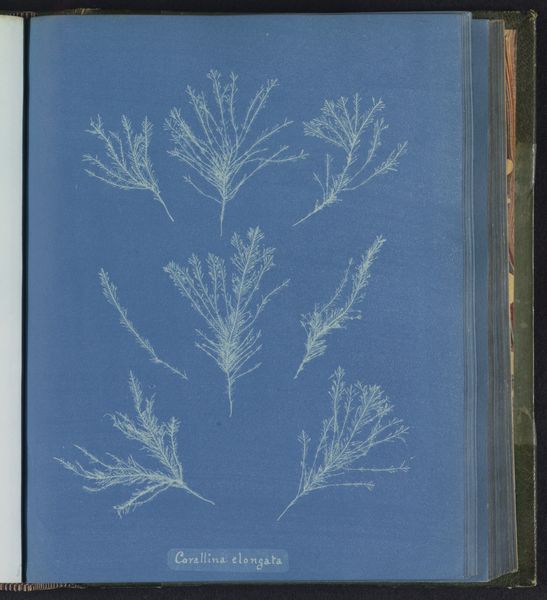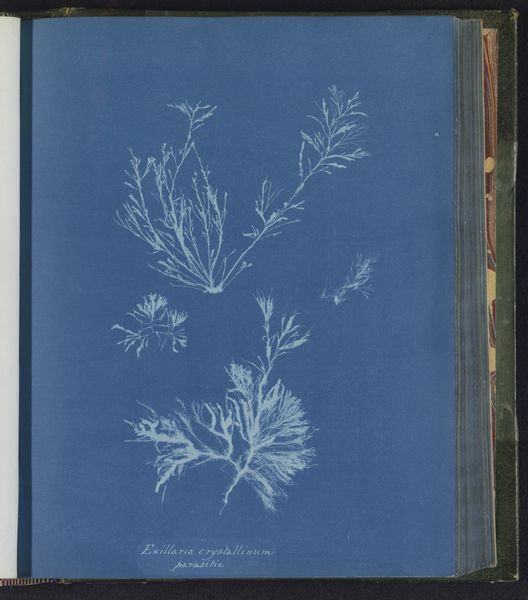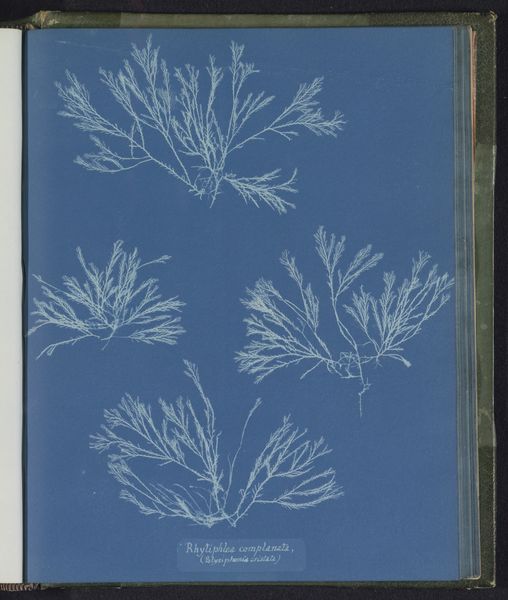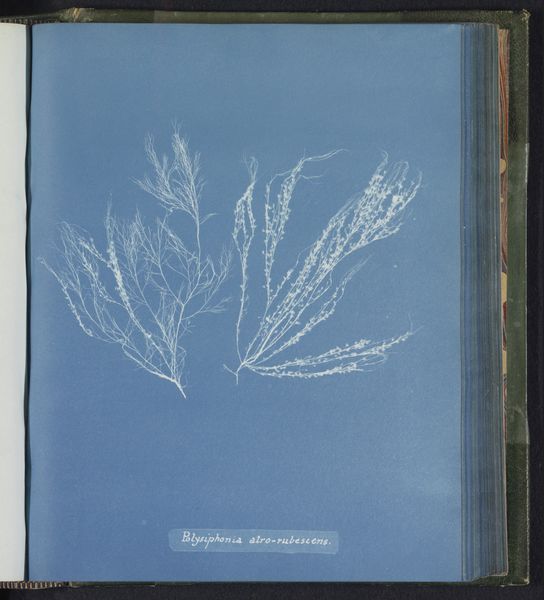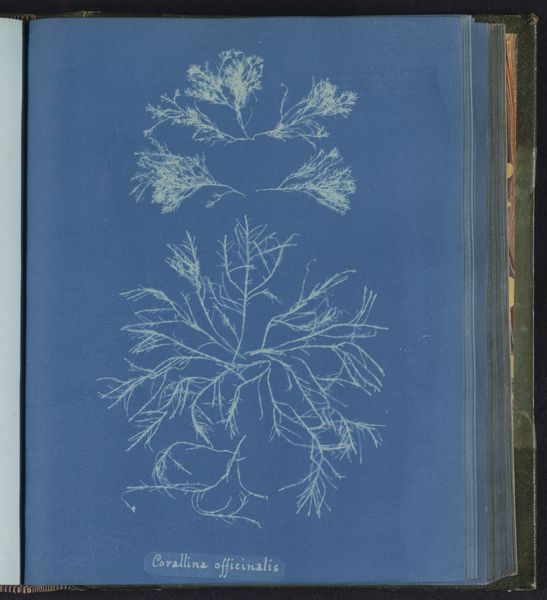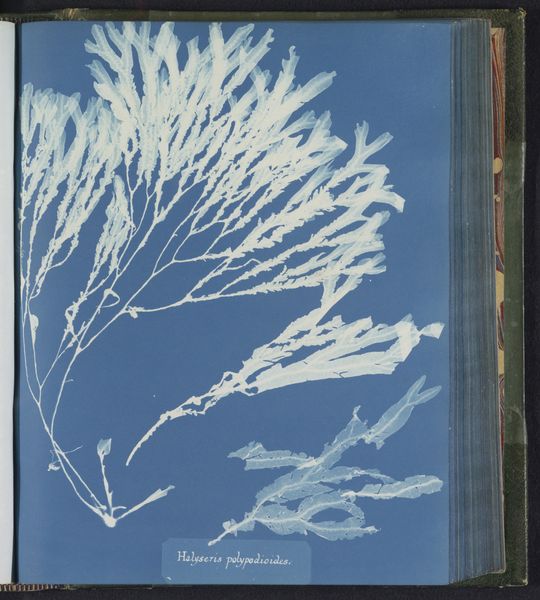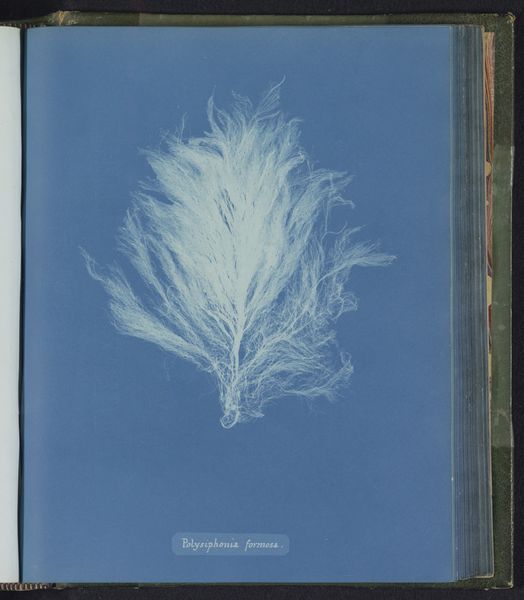
print, cyanotype, photography
# print
#
cyanotype
#
photography
#
naturalism
Dimensions: height 250 mm, width 200 mm
Copyright: Rijks Museum: Open Domain
Editor: This cyanotype by Anna Atkins, *Conferva rupestris,* from around 1843 to 1853, presents various seaweed specimens in stark white against a beautiful Prussian blue. The texture seems almost… ethereal. What draws your eye when you look at this image? Curator: Immediately, I’m drawn to the process. Atkins' choice of cyanotype is crucial here. It wasn't just a method of reproduction; it was a cutting-edge scientific tool that collapsed the boundaries between art, science, and industry. How do we categorize this work, considering Atkins made multiples? Editor: That's a great point about categorization. I suppose calling it "photography" is also tricky, since it doesn't rely on a camera lens. So where do you place this? Curator: Precisely. Atkins produced contact prints, not direct representations. The means of production — sunlight, treated paper, the specimen itself — are integral to the artwork's meaning. Consider the labor involved in preparing the chemicals, gathering the seaweed, meticulously laying it out, exposing the print… the labor is significant. She also challenges established notions of high art by employing photography, which in its early stages, was considered by many merely a technical craft. Is there any sense of scale when looking at this photograph? Editor: Not really! It's hard to get a sense of the size of the seaweed; this could be minuscule or massive. I never considered that before! So much about her materials changes our perspective. Curator: And it prompts us to re-evaluate our understanding of photography's role in art history. It questions the hierarchies we've created. These seemingly simple cyanotypes are quite radical when you examine their materiality and context. Editor: I now see how questioning the process reframes the work entirely. Thanks for illuminating that for me! Curator: It's through understanding the labor and the material context that we can truly appreciate the significance of works like *Conferva rupestris*. I appreciate you raising this point for the audio guide.
Comments
No comments
Be the first to comment and join the conversation on the ultimate creative platform.
